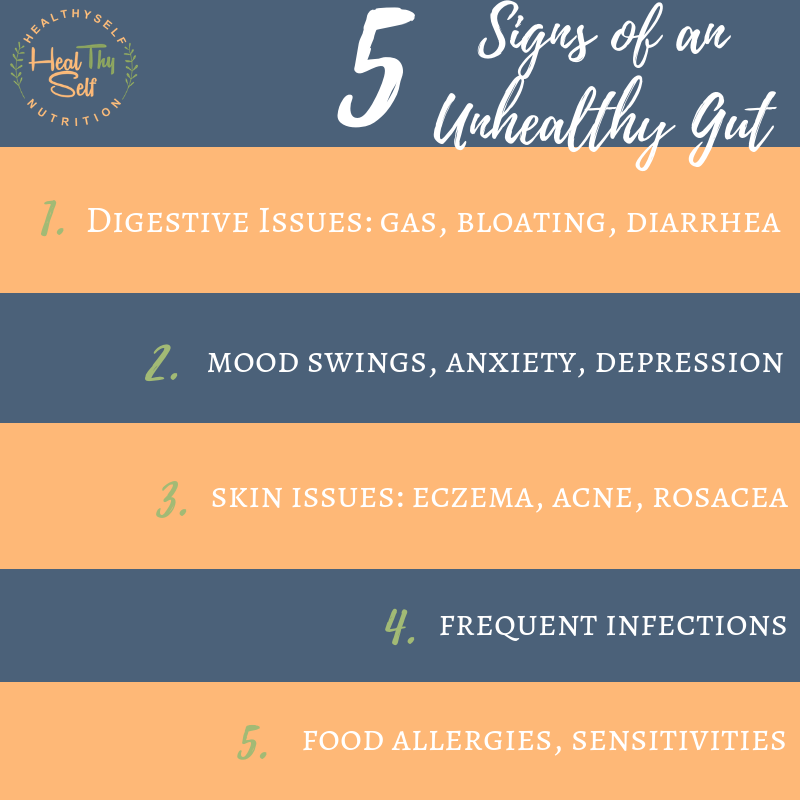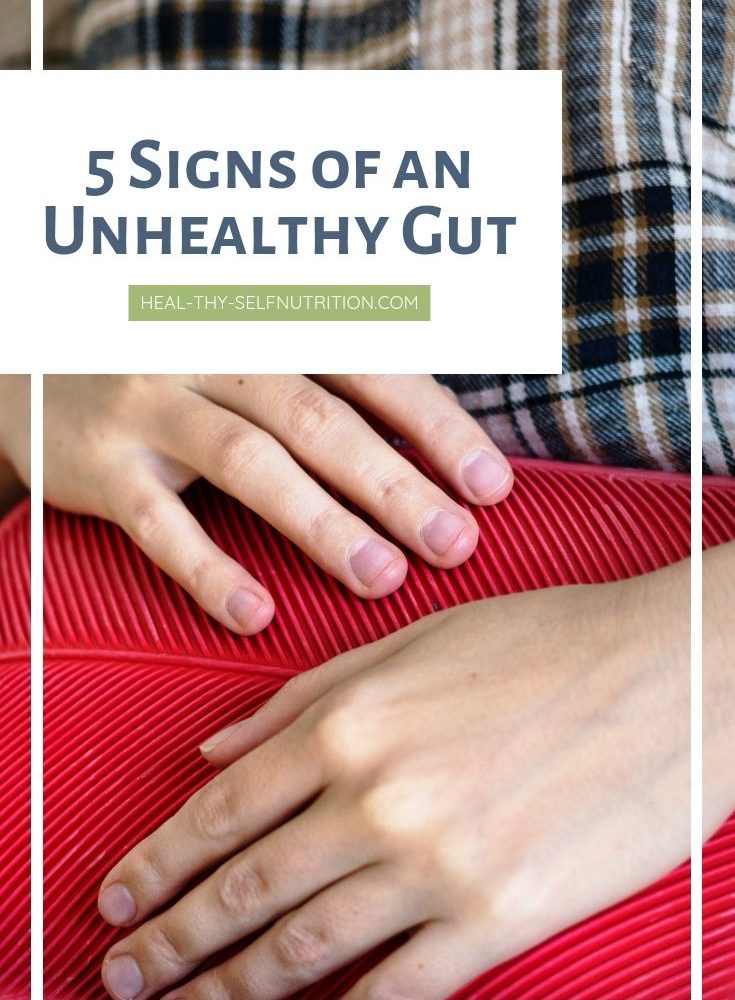5 Signs of an Unhealthy Gut
by
The gut is one of our key foundations to health and healing that is why an unhealthy gut is a no-no.
This is where we start to heal from the inside out. It is here where we absorb the nutrients from the foods we eat, get rid of wastes and toxins, and boost our immune system.
The Gut And Its Relation To The Brain
Beyond its own system in our stomach region, the gut has a direct correlation to the health of our brains – our emotions and intuitions. You’ve heard the phrases: “I’ve got a gut feeling about this” or having a “gut reaction”. Recognizing the importance of boosting and maintaining the health of this part of our bodies is where we begin to heal many parts of ourselves.
How The Gut Becomes Unhealthy
When you eat, the food travels down to your stomach where it is met by hydrochloric acid and digestive enzymes. These will be ready to digest your food. This process is usually pretty seamless if there are proper levels of hydrochloric acid (HCl) in your stomach.
However, when the HCl becomes low, your food doesn’t fully digest in your stomach. This results to the food not getting broken down enough to properly absorb all the nutrients.
The Symptoms Of An Unhealthy Gut
If you’re experiencing symptoms such as gas, bloating, diarrhea, constipation, mood swings, anxiety, depression, skin issues, frequent infections, or food allergies, these are signs of a gut that needs some love.

What To Do To Have A Healthy Gut
1. Removing the Negative Things Making An Unhealthy Gut
When beginning to address boosting the health of our digestive system, we must first remove the things negatively affecting our guts. Needs will be different for each person, but most begin by removing things that are inflammatory such as gluten, dairy, corn, soy, eggs, canola oil, and added sugars as these things are going to negatively affect the environment of our guts. These foods can also lead to food sensitivities.
Don’t feel overwhelmed – work on first reducing your intake, noticing what foods you’re eating contain these ingredients, making healthy swaps, and working on one by one.
2. Restoring The Good Things To Make An Unhealthy Gut Healthy Again
After we’ve removed these inflammatory foods, infections, or allergens, we’ll move to restoring the good things back into the gut. These good things will help with digestion and absorption, and replenish what we may have depleted with the usage of medications, processed foods, etc.
Here, we’re looking to improve stomach acid and digestion so we may add a digestive enzyme which may help reduce bloating, gas, and reflux, help nutrient absorption, and also help gallbladder function.
In conventional medicine, usually an antacid is prescribed. However, this acts as more of a masking of these symptoms. It does not really address the cause and what’s really going on.
A great natural way to improve stomach acid (hydrochloric acid) is by juicing celery juice. Celery juice contains powerful mineral salts that support gut healing and is also anti-viral.
Check Out How to Easily Make Your Own Celery Juice
3. Repairing The Unhealthy Gut
Once we have removed inflammatory triggers and added foods and nutrients that promote the optimal functioning of the digestive system, we work to repair the belly.
Removing and adding in nutrients to help things work will definitely yield positive, impactful results and improvement in symptoms, but we like to dig deeper in this functional medicine world and find out just where things went wrong so we can repair the damage.
We need the small intestine to work properly to absorb nutrients but all of the stress, food allergens, medications, bacterial overgrowth have damaged the microvilli, little finger-like projections that absorb nutrients.
Adding things like collagen, which is rich in amino acids to heal the lining of the gut and build new tissue, L-glutamine, another amino acid to rejuvenate the gut walls.
Omega 3 fish oils, vitamins A, C, E, and zinc also play a large role in the repairing of the gut.
4. Adding Good Bacteria To Your Unhealthy Gut
The last step in the process is to reinoculate– or add good bacteria into your gut/digestive system. This will come in the form of probiotics, both supplemental and in food form. We cannot out-supplement our way to a healthy gut. The combination of a powerful, multi-strain probiotic supplement with a diet of fiber-rich and fermented foods will provide a foundation for good bugs to thrive in.
Be sure to download my free list of gut loving foods to add to your diet to help the inoculation process.
Looking for help with these symptoms? Let’s do this together.
Working with Amanda will help you identify specific ways to help you reduce inflammation, maximize digestion, and support the absorption of nutrients to get you feeling better.

